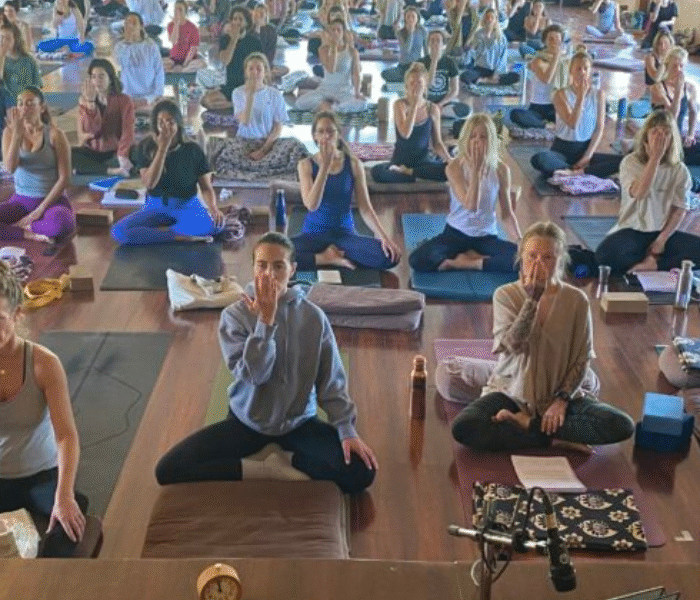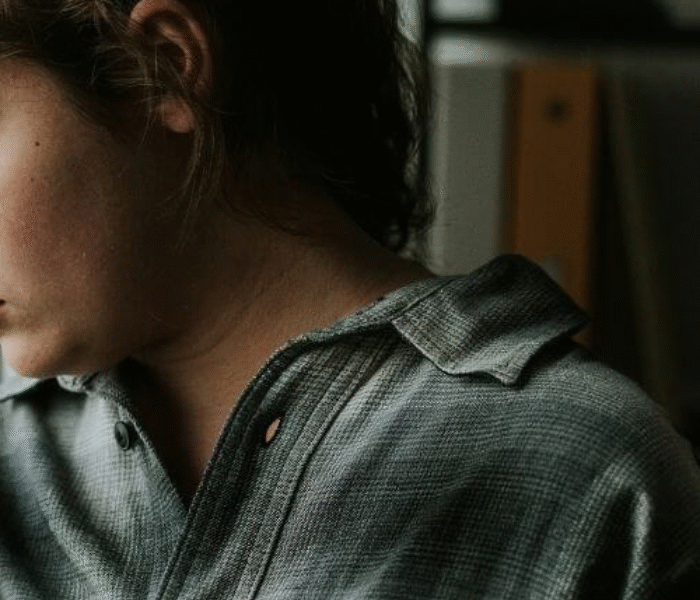Wall Yoga Poses & Sequence

Have you ever leaned against a wall to feel its support against your back? Imagine translating that feeling into your yoga practice. Wall yoga, is not just another trend; it’s a pathway to deeper understanding and alignment in your yoga journey.
Let me share a personal anecdote to kick things off.
There was a time when my yoga practice felt stagnant. No matter how many classes I attended, I couldn’t progress in certain poses.
That’s when I discovered wall yoga. It was like finding a silent mentor who was always there, offering support without judgment.
Also read >>> Yoga, My Gateway to Meditation
Key Takeaways
- Versatility and Accessibility: Wall yoga is a versatile practice that caters to yogis of all levels, from beginners to advanced practitioners. It makes challenging poses more accessible and offers new ways to explore familiar poses, enhancing the yoga practice for everyone.
- Enhanced Stability and Alignment: A wall is a constant support, providing stability that allows for a deeper focus on alignment. This support is crucial for mastering balance poses, refining alignment, and improving overall posture in yoga practice and daily life.
- Deepened Stretches and Strength Building: Using a wall can help deepen stretches and increase flexibility, particularly in poses that may be challenging in the centre of the room. It also offers resistance and support for building strength, especially in advanced poses and inversions.
- Therapeutic Benefits: Wall yoga includes restorative poses that promote relaxation and stress relief. Poses like Legs-Up-the-Wall provides a gentle way to unwind, making it an excellent practice for recovery days or to relieve tension after long periods of sitting or standing.
- Improved Proprioception and Body Awareness: Practicing yoga with a wall’s feedback helps improve proprioception, enhancing awareness of the body’s position in space. This increased awareness is beneficial for achieving proper alignment in poses and can contribute to better posture and movement patterns outside of yoga practice.
- Safe Exploration of Advanced Poses: A wall provides a safety net that encourages the exploration of advanced poses, such as inversions and deep backbends, in a controlled and safe manner. This support allows practitioners to challenge themselves without fear of falling or injury.
- Adaptability for Health Conditions: Wall yoga can accommodate various health conditions, offering a gentle yet effective way to maintain mobility and strength. However, it’s essential to consult healthcare professionals for personalized advice, especially for individuals with specific health concerns.
- A Tool for Meditation and Mindfulness: The supportive nature of wall yoga poses can also facilitate more profound meditation and mindfulness practices. The physical stability offered by a wall allows practitioners to focus inward, fostering a state of mental calm and presence.
- Integration into Daily Practice: Incorporating wall yoga into a regular yoga routine can transform the practice, offering new insights and challenges. It’s a reminder that leaning on something can sometimes open us up to new possibilities and growth.
Why Practice Yoga against a Wall?
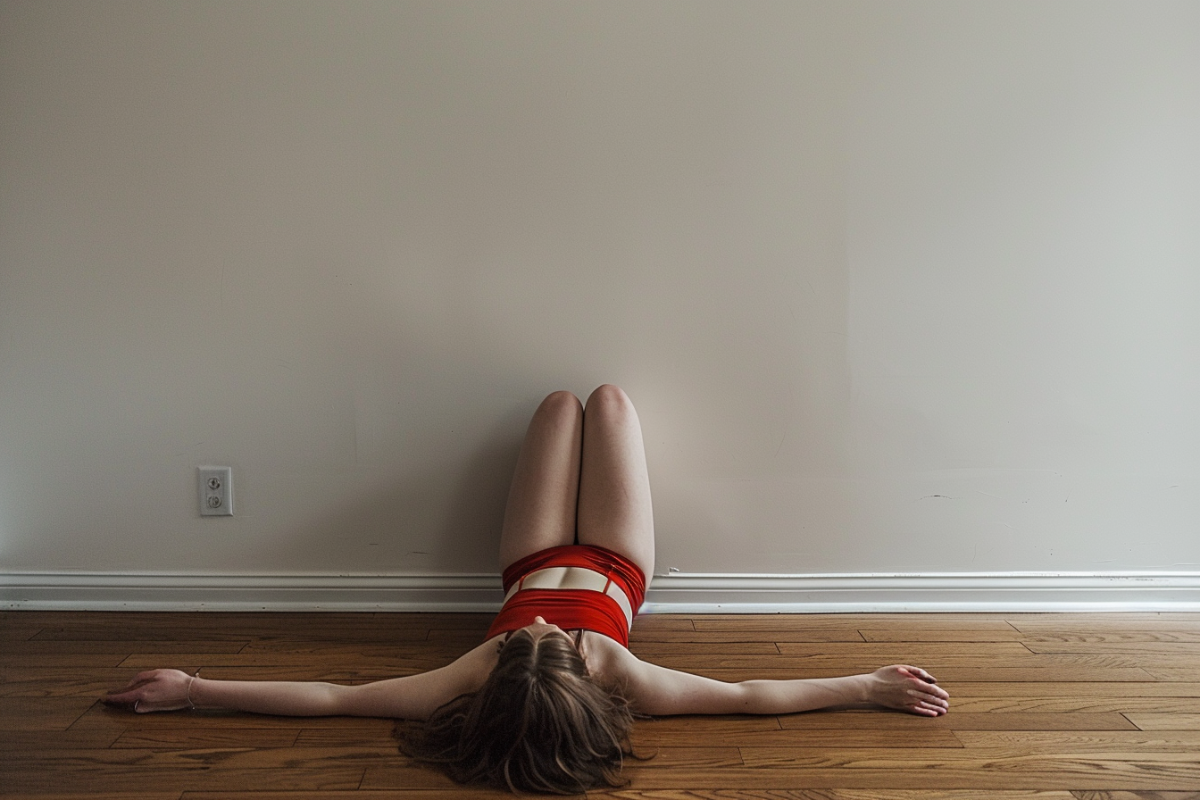
A wall, often overlooked, is a powerful tool in yoga. It provides stability, feedback on your alignment, and a sense of security, allowing you to explore poses with a new perspective.
Whether you’re a beginner or an advanced practitioner, a wall can elevate your practice, helping you to refine poses, deepen stretches, and even tackle those inversions you’ve been eyeing warily.
The Benefits of Using a Wall in Your Yoga Practice
- Enhanced Stability: A wall offers an unwavering support system, allowing you to hold poses longer and with better form.
- Improved Alignment: It acts as a physical guide, helping you understand the spatial orientation of your body in various poses.
- Accessibility: With a wall’s support, challenging poses become more accessible, encouraging you to push your limits safely.
- Deepened Stretches: Leaning into or against a wall can deepen stretches, providing a gentle yet effective way to increase flexibility.
Getting Started with Wall Yoga
Embarking on your wall yoga journey requires little in terms of equipment but much in terms of openness and willingness to explore. The beauty of wall yoga lies in its simplicity and the profound impact it can have on your practice.
Preparing Your Space: What You Need
First things first, find a clear wall space. You don’t need an entire room; just enough space to stretch your arms out and not touch anything. Your starting point is a yoga mat placed perpendicular to a wall.
If you have yoga blocks or a strap, keep them handy, although they’re optional. The most important thing?
An open mind ready to explore the boundaries of your yoga practice.
Basic Principles of Wall Yoga
- Start Slow: Begin with simple poses to get accustomed to using a wall as a prop. Feel its support and adjust your body accordingly.
- Listen to Your Body: A wall is there to support, not to force. Please pay attention to your body’s signals and respect its limits.
- Explore and Experiment: Use a wall to explore poses in new ways. Try different distances and angles to see how they affect your alignment and sensations in the poses.
- Focus on Alignment: The feedback from a wall can highlight misalignments in your practice. Use this insight to adjust and refine your poses.
By setting up your space with intention and approaching your practice with curiosity, you’re ready to unlock the benefits of wall yoga.
Let’s dive into some foundational poses that will introduce you to a wall’s unique support and challenges.
Wall Yoga Poses for Beginners
Embarking on your wall yoga journey begins with mastering a few foundational poses.
These poses are designed to introduce you to a wall’s unique support, helping you build confidence as you explore your practice.
Mountain Pose Wall (Tadasana Wall)
Stand with your back against a wall, feet hip-width apart. Ensure your heels, buttocks left hip, upper back, and the back of your head lightly touch a wall. Engage your thigh muscles, draw your belly in, and lengthen your spine.
Allow your arms to hang naturally by your sides, palms facing forward. Close your eyes and take deep breaths, feeling a wall’s support aligning your posture.
Hold for 30 seconds to 1 minute, simultaneously focusing on being grounded and uplifted.
Downward Facing Dog against a Wall
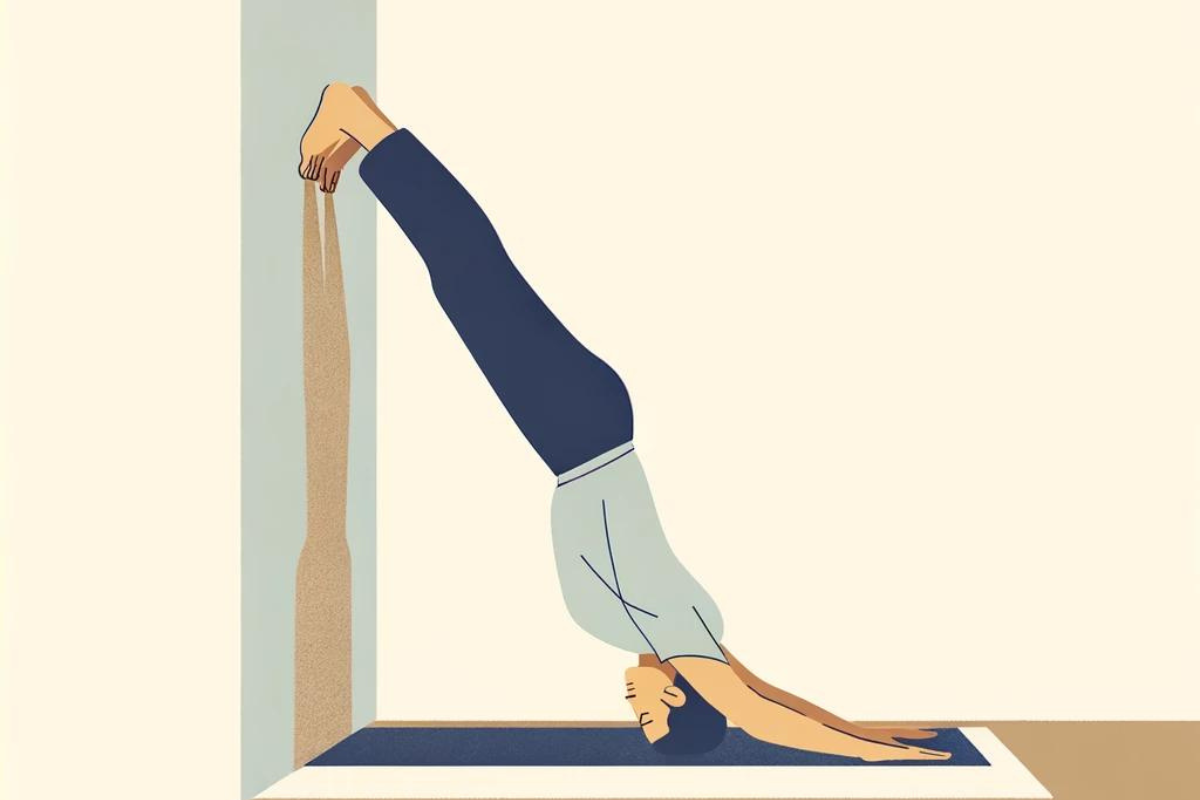
Face away from a wall, hands on the floor in front of you, and walk your feet back until they’re about hip-distance apart and your feet and toes can press against a wall.
Push into your hands and feet, lifting your hips towards the ceiling, creating an inverted V-shape with your body.
A wall provides a unique perspective on hip alignment and leg engagement. Hold for 1 to 2 minutes, breathing deeply and enjoying the pressing into a wall and stretch along your spine and legs.
Chair Pose Against a Wall
Stand with your back against a wall, feet hip-width apart and a few inches away from a wall. Slowly slide down a wall until your knees bent thighs parallel the floor as if sitting in an invisible chair.
Ensure your knees are directly above your ankles.
Extend your arms forward, parallel to the floor, or join your palms in Anjali Mudra (prayer position) at your heart centre. A wall encourages proper spine alignment right hip, and core engagement. Hold for 30 seconds to 1 minute, focusing on building strength in your legs and back.
These beginner poses offer a gentle introduction to using a wall in your yoga practice.
They help build a foundation of stability, alignment, and awareness that you can carry into more advanced poses.
Improving Alignment and Posture
Wall yoga isn’t just about stability; it’s a profound tool for enhancing your understanding of alignment and posture on and off the mat. Let’s explore how a wall can serve as a guide to refine your practice and improve your overall posture.
Using a Wall for Better Posture
A wall is a constant, providing immediate feedback on your upper body’s position in space. This tactile guidance helps correct common misalignments and encourages a deeper awareness of your posture.
- Alignment Check: Stand with your back to a wall, heels a few inches away. Ensure your head, shoulders, and hips touch the wall. This simple check can highlight tendencies to slouch or tilt and guide you towards better alignment.
- Pelvic Tilt: Press your lower back gently against the wall to feel a neutral pelvis alignment. This awareness is crucial for poses like Mountain Pose (Tadasana) and helps improve standing and sitting posture.
Triangle Pose With a Wall
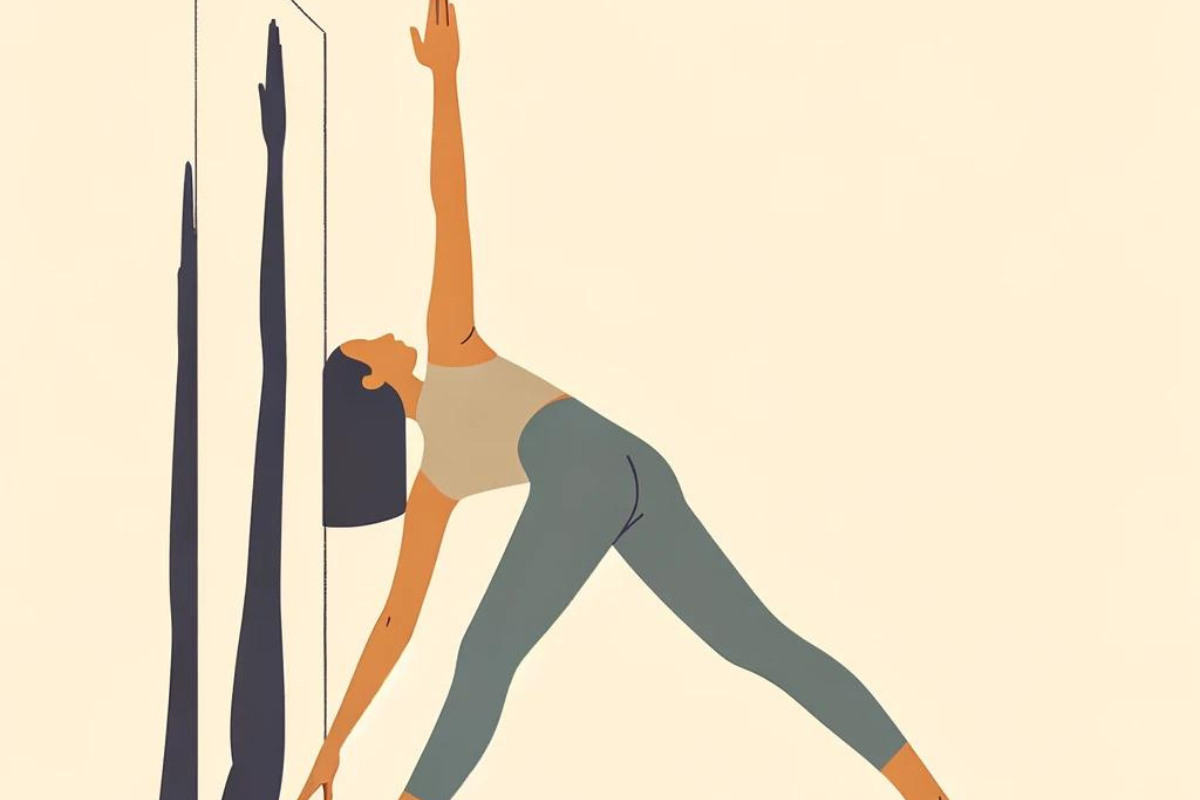
Triangle Pose (Trikonasana) with a wall helps ensure your torso doesn’t lean forward, promoting openness and alignment.
- Stand sideways near a wall with your feet wide apart.
- Extend your arms parallel to the floor, then reach down to place your hand on your shin, a block, or the floor as your top hand reaches the ceiling.
- Press your back body lightly against the wall, aligning shoulders and hips. This alignment encourages a more open chest and a lengthened spine.
- Hold for 30 seconds to 1 minute, then switch sides.
Also read >>> Tadasana, Mountain Pose
Tree Pose With a Wall
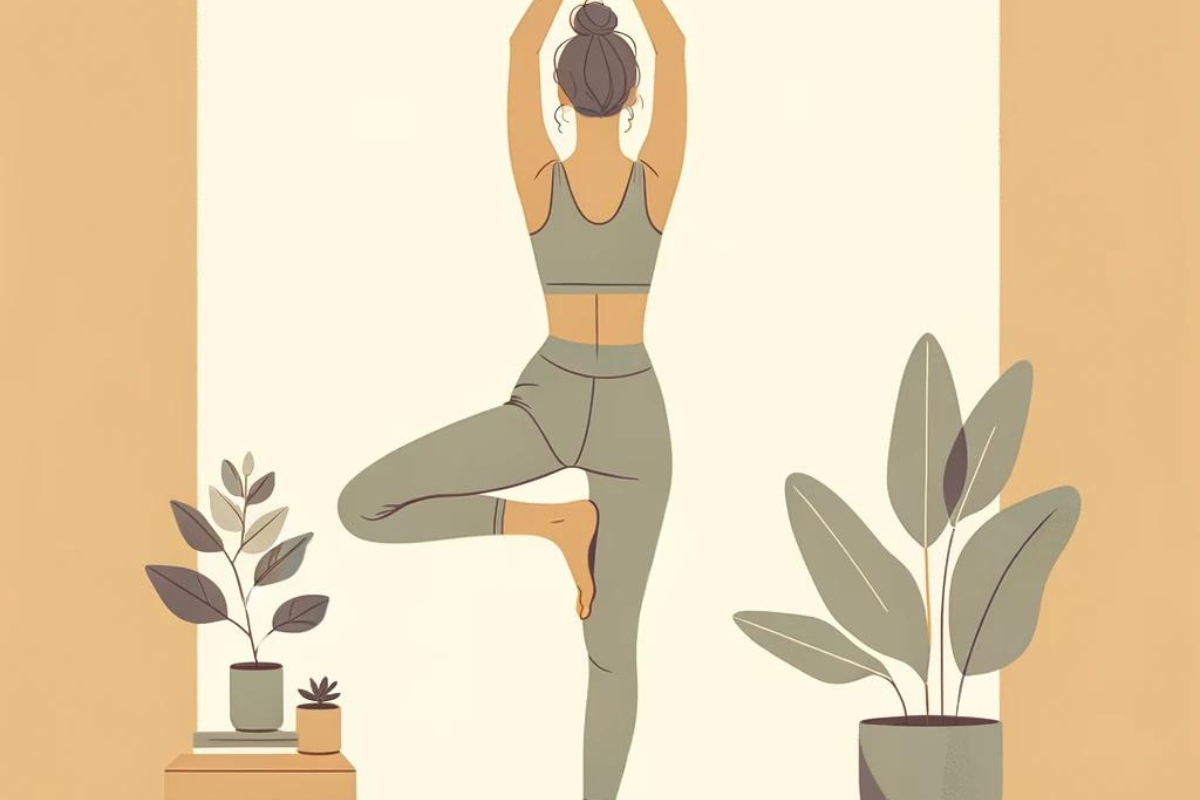
Tree Pose (Vrksasana) with the feet pressing a wall aids balance and alignment, focusing on hip opening and vertical alignment.
- Stand close to the wall, using it for balance as needed.
- Place the sole of one foot on the inner thigh or calf of the standing leg, avoiding the knee joint.
- Press your standing back lightly against a wall, vertically aligning your hips and shoulders.
- Hold for 30 seconds to 1 minute, then switch legs.
These poses, aided by a wall, improve your yoga practice and enhance your everyday posture, leading to better health and confidence.
Building Strength and Flexibility
Wall yoga is not only about finding balance and improving alignment; it’s also an excellent way to build strength and flexibility.
A wall provides resistance and support, allowing you to deepen stretches and strengthen muscles more effectively. Let’s explore some poses that utilize a wall for these purposes.
Forearm Plank and Sphinx Pose at a Wall
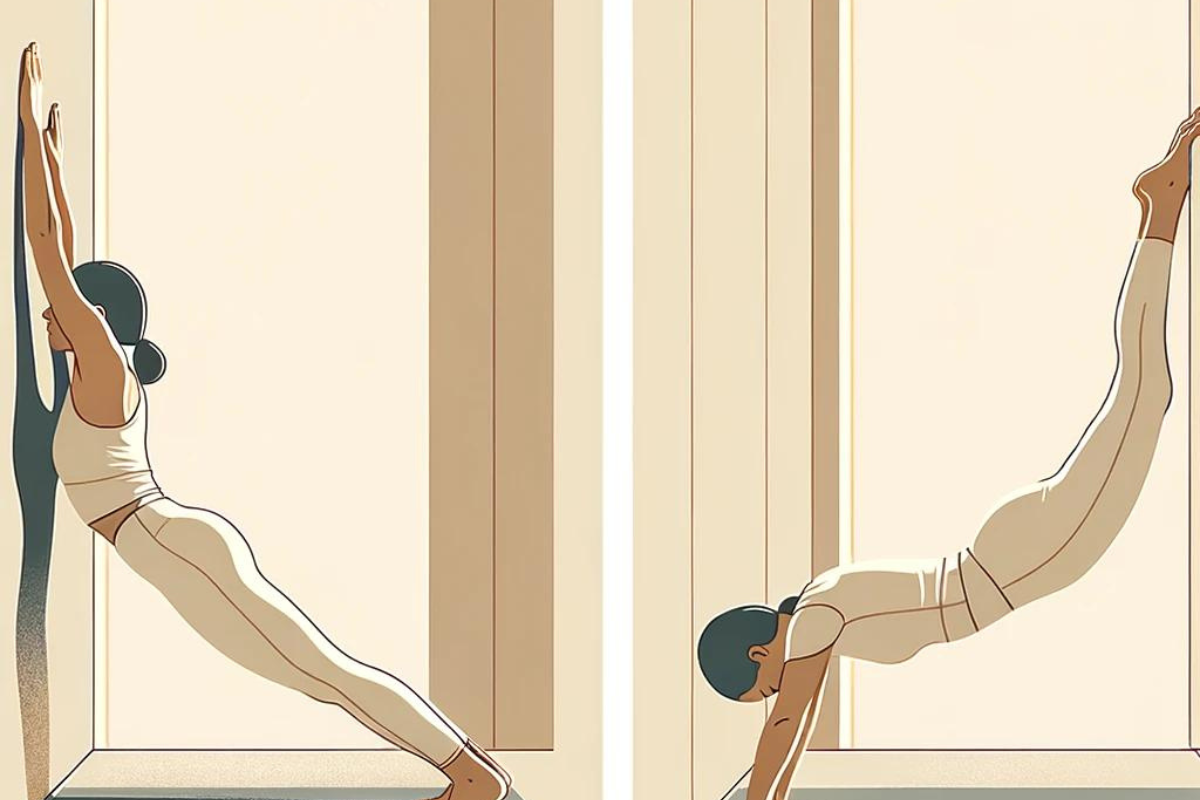
These poses strengthen the core, shoulders, and back, opening the chest and breathing process stretching the spine.
- Forearm Plank at a Wall:
- Face the wall, placing your forearms on it, shoulder-width apart.
- Step back until your body forms a straight line from your head to your heels, like a plank.
- Press your forearms into a wall and engage your core, holding for 30 seconds to 1 minute.
- Sphinx Pose at a Wall:
- From the Forearm Plank, step forward, lowering your hips toward the floor, keeping your forearms on a wall.
- Press your chest forward and up, extending your spine into a gentle backbend.
- Hold for 30 seconds to 1 minute, feeling the stretch across your chest and the engagement in your lower back.
Chaturanga Dandasana (Four-Limbed Staff Pose) at the Wall
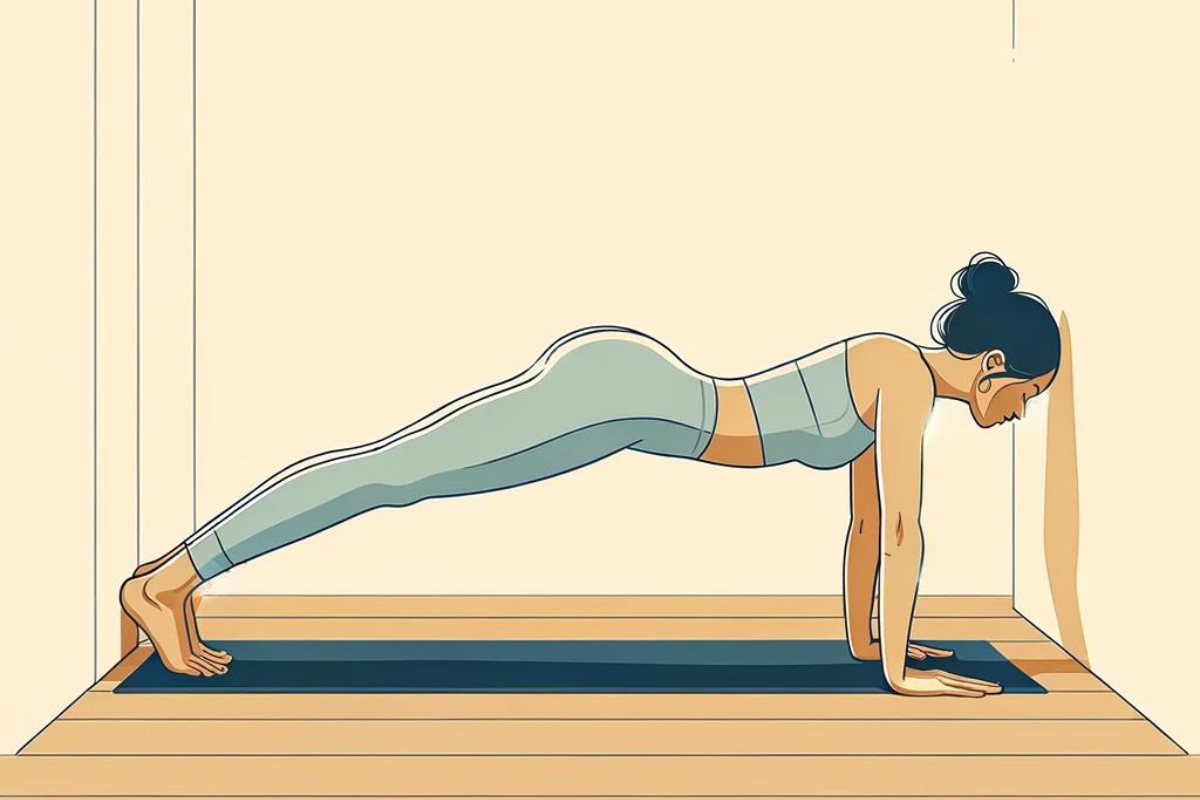
This pose builds strength in the arms, shoulders, inner thighs, and core, and using a wall helps ensure proper form.
- Stand facing a wall, about an arm’s length away.
- Place your hands on a wall at waist height, stepping back just enough to lean into them.
- Bend your elbows, lowering your torso toward a wall while keeping your body straight.
- Press back up to the starting position, engaging your core and arm muscles.
- Repeat 5-10 repetitions to maintain a robust and plank-like body position.
Incorporating these poses into your wall yoga practice can significantly enhance your strength and flexibility, offering a foundation for more advanced poses and techniques.
Restorative Wall Yoga Poses
Restorative yoga poses using a wall offer a unique blend of gentle support and deep relaxation, allowing for a release of tension and stress.
These poses encourage the body to open through passive stretching, where a wall is comforting and stabilizing.
Let’s delve into some restorative poses that utilize a wall for a soothing practice.
Legs-Up-the-Wall Pose (Viparita Karani)
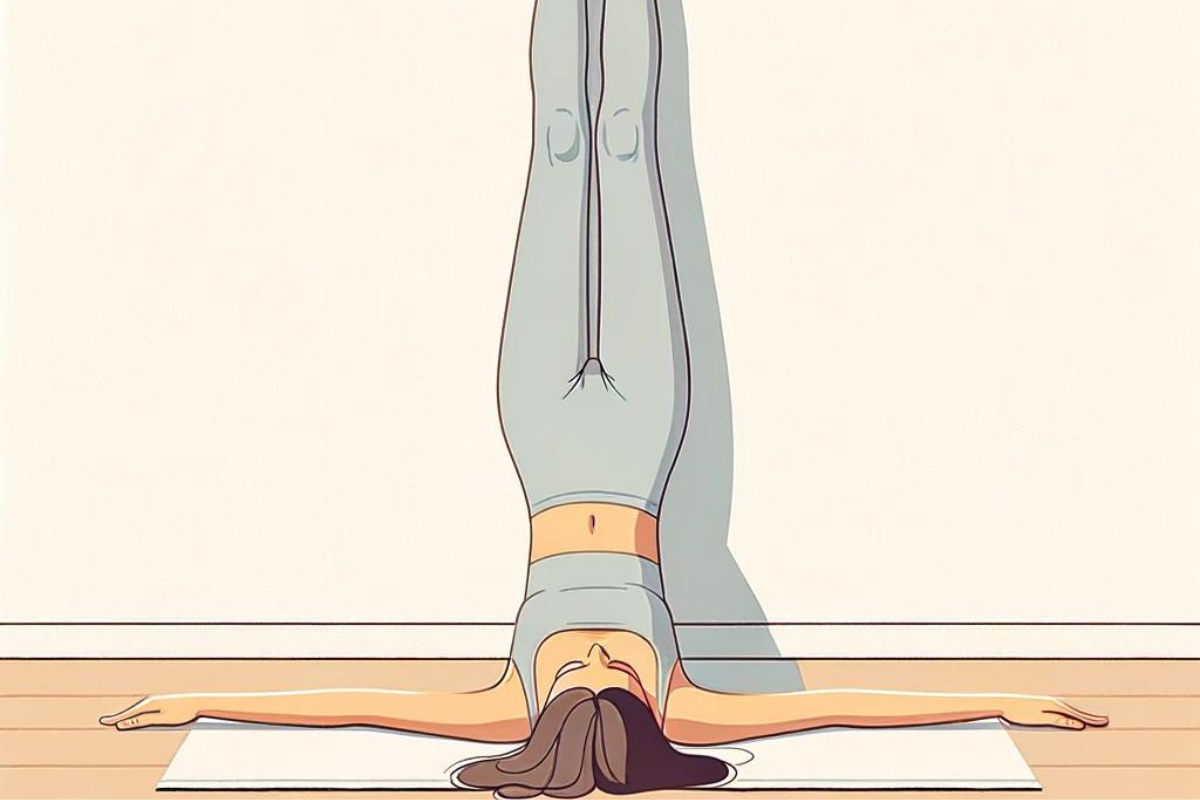
This classic restorative pose is known for its myriad benefits, including relieving tired legs and feet, easing lower back tension, and promoting relaxation.
- Sit with one side of your body against a wall, then gently swing your legs onto a wall as you lay back on the floor.
- Your buttocks can be right against a wall or a few inches away, depending on what feels most comfortable for your body.
- Allow your arms to rest by your sides, palms facing up, or place one hand on your heart and one on your belly.
- Close your eyes and breathe deeply. Stay in the pose for 5-10 minutes, allowing gravity to drain tension from the legs and hips gently.
Also read >>> Baki Pose
Reclined Hand-to-Big-Toe Pose (Supta Padangusthasana) at the Wall
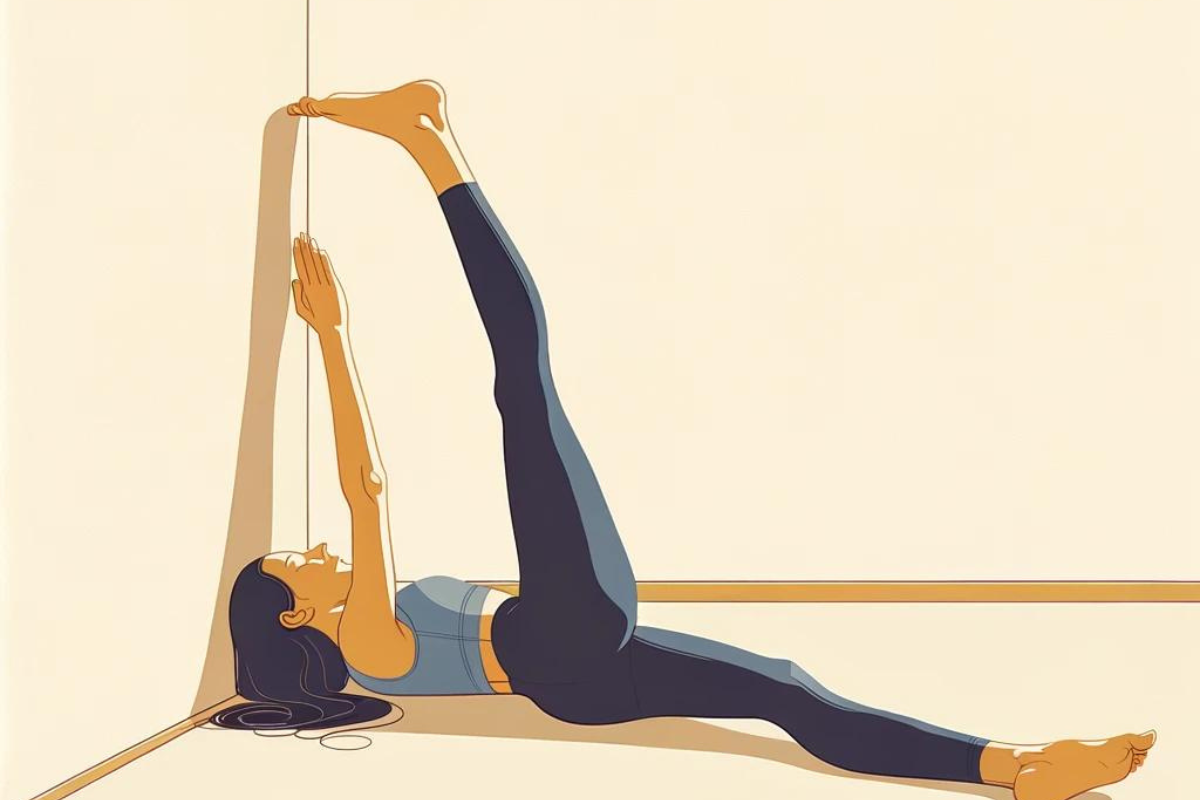
This variation provides a gentle hamstring stretch while also allowing for relaxation and stress relief.
- Lie on your back with your legs extended up the wall and hips close to or slightly away from the wall.
- Keeping one leg straight and pressed against the wall, bend the other knee and bring it towards your chest.
- Use a yoga strap or towel around the foot of the bent leg, extending it towards the ceiling while keeping the other leg straight and active against the wall.
- Hold for 3-5 minutes on each side, focusing on a gentle stretch in the hamstrings and a deep sense of relaxation throughout the body.
These restorative poses are perfect for winding down at the end of a yoga practice or a long day. They offer a moment of tranquillity and a chance to reset both body and mind.
Incorporating wall yoga into your practice, whether for building strength, improving flexibility, or seeking relaxation, provides a unique and supportive way to deepen your yoga journey.
A wall, often just a structural element in the room, becomes a trusted partner in your practice, guiding you towards greater awareness, alignment, and ease.
Advanced Wall Yoga Techniques
As you become more comfortable and confident with the basics of wall yoga, you may be curious about how a wall can support more advanced practices.
A wall is not just for beginners; it offers seasoned yogis a unique way to challenge their practice, refine their alignment, and explore poses that might seem out of reach on the mat alone.
Let’s explore advanced techniques that utilize a wall for challenge and support.
Warrior III (Virabhadrasana III) with Wall Support
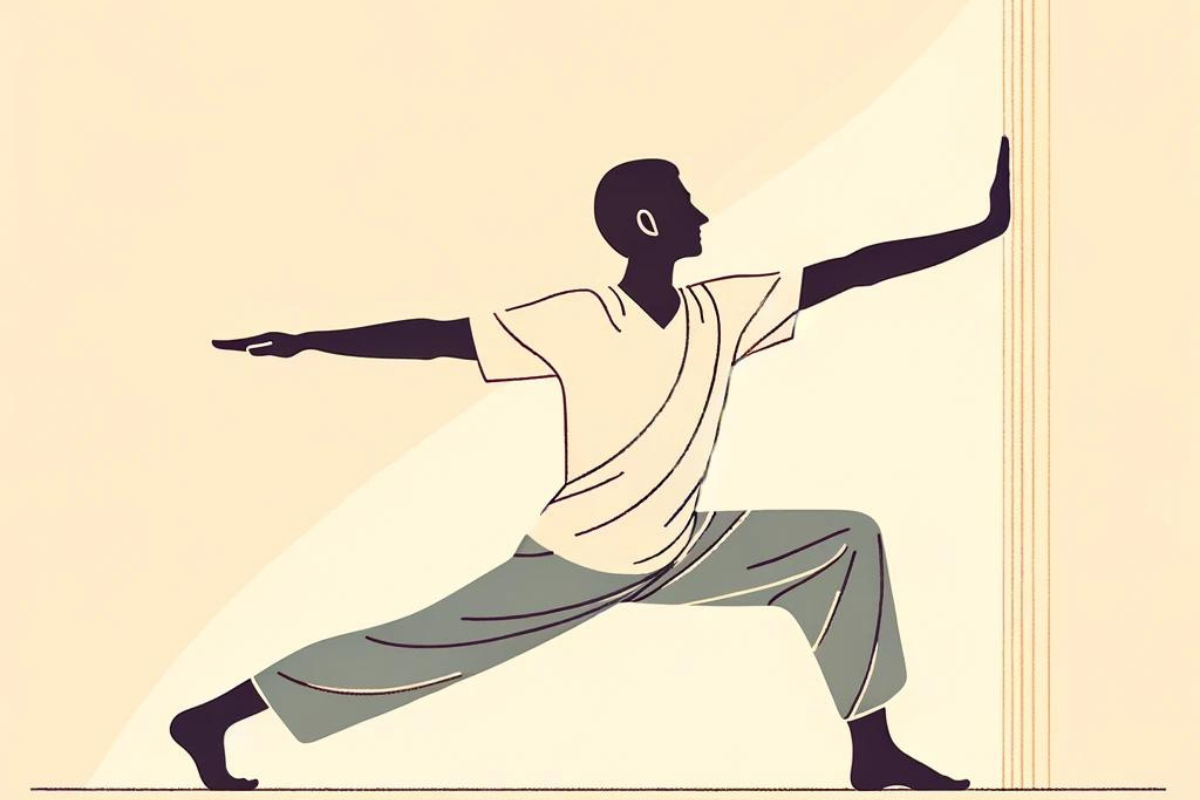
Warrior III is a pose that challenges balance, strength, and focus.
A wall can help you fine-tune your alignment and explore the pose in new depth.
- Stand a few feet away from the wall, facing away.
- Hinge at the hips and extend one leg back towards the wall, pressing the sole of your foot against it.
- Reach your arms forward, parallel to the floor, or bring them alongside your body, palms facing each other.
- A wall supports your back leg, allowing you to focus on lengthening from the tips of your fingers to your back foot, engaging your core, and maintaining a straight line through your body.
- Hold for 30 seconds to 1 minute, then switch legs.
Advanced Balancing Poses Using a Wall
A wall can be a valuable tool teaching yoga and for practising advanced balancing poses, such as Handstand (Adho Mukha Vrksasana) or Forearm Stand (Pincha Mayurasana).
- Handstand Preparation at the Wall:
- Begin in Downward Facing Dog with your feet against a wall.
- Walk your feet up a wall until your body forms a 90-degree angle, aligning your hips over your shoulders.
- Press firmly into your hands, engage your core, and work on lifting one foot at a time off the wall, finding balance.
- This preparation builds the strength and alignment necessary for a full handstand while providing the safety of a wall.
- Forearm Stand Practice:
- Start in Dolphin Pose with your forearms on the floor and heels against a wall.
- Walk your feet up the wall, bringing your body into an inverted “L” shape.
- Practice lifting one leg at a time away from the wall, aiming to balance in the Forearm Stand with the wall as a safety net.
These advanced techniques allow you to safely explore inversions and balancing poses, building strength, confidence, and skill with the support of the wall.
Integrating Wall Yoga into Your Routine
Incorporating wall yoga into your regular practice can transform your approach to yoga, offering new insights and ways to deepen your practice.
Whether using a wall to refine your alignment in foundational poses, explore advanced techniques, or find relaxation in restorative poses, a wall becomes an invaluable tool in your yoga journey.
- Start Small: Begin by integrating one or two wall poses into your practice, gradually exploring more as you become comfortable.
- Listen to Your Body: Use the feedback from the wall to become more attuned to your body’s needs and alignment.
- Be Creative: A wall offers endless possibilities for exploration. Feel free to experiment with different poses and use the wall in new ways.
Wall yoga is a testament to the adaptability and creativity inherent in yoga practice. It reminds us that leaning on something sometimes doesn’t limit us but instead opens us up to new possibilities.
A wall, a simple and steadfast part of our environment, becomes a source of support, challenge, and discovery in our yoga practice.
Conclusion
Wall yoga is a versatile and accessible practice that can enrich your yoga journey. It offers support, challenge, and a new perspective on alignment and posture.
Whether you’re a beginner seeking stability, an experienced yogi exploring advanced poses, or anyone in between, a wall provides a steadfast companion on the path to wellness.
- Versatility: Wall yoga adapts to support a wide range of practices, from restorative to advanced inversions.
- Alignment and Posture: It offers invaluable feedback for improving alignment and deepening your understanding of each pose.
- Accessibility: A wall makes challenging poses more accessible, encouraging safe exploration and growth.
Incorporating wall yoga into your routine can open up new dimensions of your practice, fostering a deeper connection with your body and enhancing your overall well-being.
FAQs
Wall yoga enhances your practice by offering support, resistance, and feedback. It improves stability in balance poses, deepens stretches, and refines alignment, leading to better posture and body awareness in daily life. Incorporating wall yoga into your routine can significantly benefit your overall yoga practice.
Putting right leg and your feet up on a wall, as in Viparita Karani (Legs-Up-the-Wall Pose), has several benefits:
It can help relieve tired legs and feet by reversing blood flow.
It aids in reducing swelling and discomfort in the lower extremities.
This pose promotes relaxation and can help in reducing stress and anxiety.
It gently stretches the hamstrings and lower back.
Spending 20 minutes in a Legs-Up-the-Wall Pose can have profound effects on your well-being:
It enhances circulation, making it beneficial for cardiovascular health.
It allows for more profound relaxation and can improve sleep quality.
This extended time helps in more profound relaxation of the mind and can aid in meditation practices.
It supports the body’s natural processes of recovery and rejuvenation.
Wall yoga doesn’t have a specific name other than being referred to as yoga practices that utilize a wall for support. It encompasses various poses and techniques adapted to use a wall as a prop.
While Legs-Up-the-Wall is a gentle and restorative yoga pose, it may not be suitable for everyone:
Those with high blood pressure or glaucoma should consult with a healthcare provider due to the inversion nature of the pose.
Pregnant individuals should seek advice from a healthcare professional, especially in the later stages of pregnancy.
Anyone with back issues should proceed with caution and consider using supportive props.


